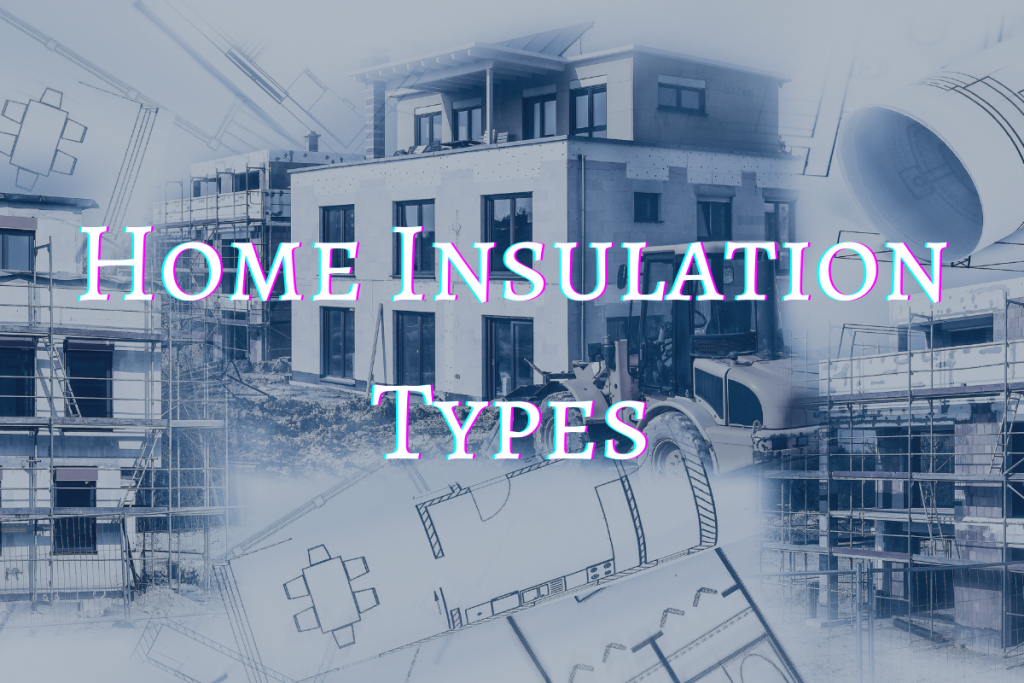How to compare different types of insulation
The R-value per Inch (or heat transfer resistance) is stated on each type of insulation. The insulation’s effectiveness will be greater if the R-value per inch is higher. You need to have a high R-value per inch where space is limited, such as in wall cavities. You can increase the insulation value of lower-rated materials by adding thicker layers to attics or floors that have more space.
The rule is that the more insulation you have, the more you will save. There is a limit to how much you can spend on insulation and how much you will save on energy costs. It varies from one place to another. For the best insulation, consult the Department of Energy’s recommendations by zip code.
An insulation upgrade can help you reduce your heating or cooling costs. Learn more about insulation costs and uses. Also, learn whether to hire a professional or DIY.
Blankets and batts
This insulation is available in convenient rolls that can be easily transported and carried. It is especially useful for DIY projects. However, it should be cut to fit around pipes and wires. It can lose up to 50% of its effectiveness if it is stuffed in awkward places.
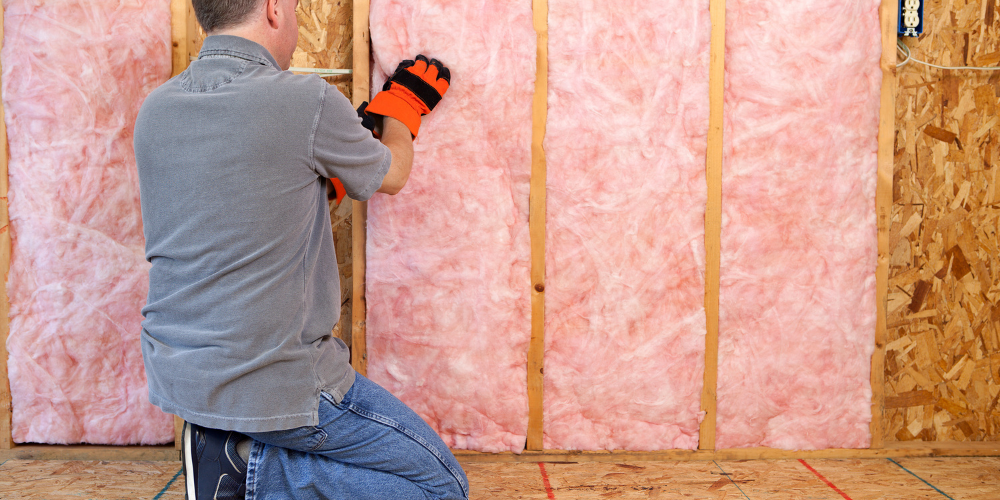
Fiberglass Blankets and Batts
- R-value: 3.0-4.0/inch (R-13 for a 2-by-4-framed walls).
- Benefits: Standard widths and thicknesses that fit between joists, studs, and roof rafters are widely available and easily accessible. Easy installation is possible with foil- and paper-faced versions that have stapling flaps.
- Drawbacks: Installations can be itchy. Protective clothing is recommended. To fit into spaces, fiberglass rolls must be cut manually. It is easy to compress, which can cause it to lose its insulation properties.
- Environmental concerns: Phenol formaldehyde is being phased down as a binder. This chemical has been linked to cancer. Because fibers can be inhaled quickly, regulators have decided that warning labels about possible cancer are no longer necessary.
- Best use: Walls, floors, ceilings.
- Pro or DIY: DIY
- Cost: $0.64 to $1.19 Per sq. ft.
Rockwool Blankets and Batts
- R-value: 4-5/inch (R-15 for 2-by-4-framed walls).
- Advantages: More fire-resistant than fiberglass. Not itchy. Staple-free installation is quick and easy because springs into shape against studs.
- Drawbacks: It is not widely available and can retain moisture. If it gets damp, it could harbor mold growth.
- Environmental concerns: High recycled content up to 90% (all pre-consumer). Although the products might contain small amounts of crystalline silicon, a well-known carcinogen. However, research has not shown that Rockwool fibers can cause lung disease.
- Best use: Walls, floors, ceilings.
- Pro or DIY: DIY
- Cost: 80 cents per sq. ft.
Cotton Batts
- R-value: 3.5-4 inches (R-13 for a 2-by-4 wall).
- Advantages: Doesn’t itch. Easy-to-handle rolls. Easy to cut for fitting around pipes.
- Drawbacks: Not widely accessible and more expensive than other batts.
- Environmental concerns: At least 85% of the fiber is recycled and requires very little energy to make. Borate fire retardant is also included, which deters some pests.
- Best Use: Walls.
- Pro or DIY: DIY
- Cost: About 15-20% more than fiberglass
Loose-Fill Insulation
The insulation is made up of fluffy fibers that are blown into walls and attics using a special machine. It eliminates cold spots by filling all nooks and crevices.
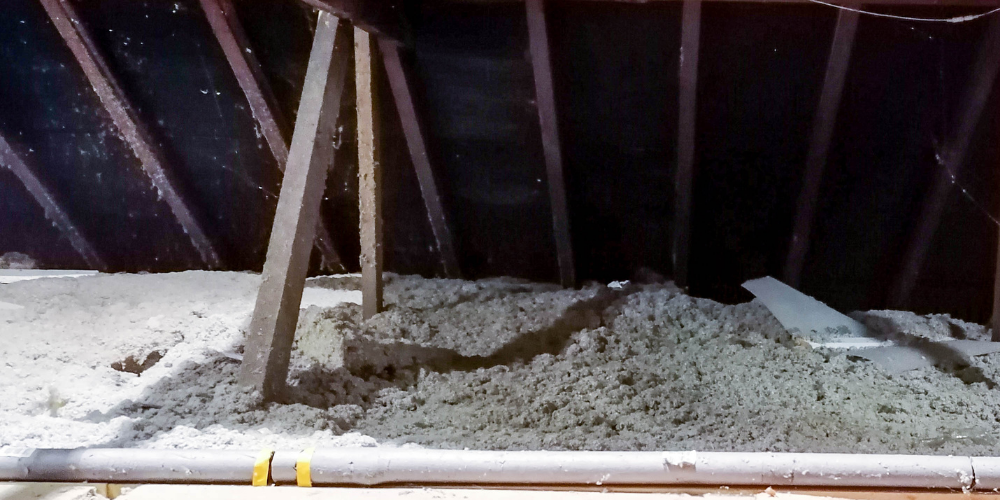
Loose-Fill Fiberglass
- R-value: 2.2-2.7 per inch.
- Advantages: Lightweight enough to be used in attics with drywall ceilings up to 1/2-inch thick, and framing every 24-inch.
- Drawbacks: Loose applications can lose up to half of their effectiveness in cold temperatures unless they are topped with blanket insulation or higher-density loose fill (see cellulose below).
- Environmental concerns: Similar to fiberglass blankets and batts but without formaldehyde. As high as 60% recycled content.
- Best use: Ceilings.
- Pro or DIY: Insulating an attic space in open air is easy for competent DIYers. DIY can save you up to 70% compared to hiring a professional. You might be able to rent an insulation blower at your local tool rental shop or home improvement center. If the job is complicated, hire a professional to increase energy savings.
- Cost: 30 Cents per cubic foot.
Loose-Fill Cellulose
- R-value: 3.2-3.8 per inch.
- Advantages: Works at all temperatures and performs better when the air is colder.
- Drawbacks: Too heavy to install in attics; ceiling must have at most 5/8-inch framing or drywall every 16 inches. It can settle to 20% over time, which reduces its effectiveness.
- Environmental concerns: Fibers can lodge in the lungs and cause respiratory problems. Dust is a minor nuisance. Cellulose insulation is typically composed of around 85% post-consumer recycling paper and 15% fire retardant. This is usually a borate compound that helps repel pests.
- Best Use: Ceilings or openings to new walls, unfinished attic floors, and other difficult-to-reach places.
- Pro or DIY: Same as loose-fill fiberglass.
- Cost: 31 Cents per cubic foot.
Structural Insulated Panels
Although structural insulated panels (SIPs), offer superior energy savings of between 12% and 14%, they are also more expensive. They are usually available in sheets of 4×8 feet. However, some manufacturers offer them larger sizes, which is useful for new construction.
These boards can be used to insulate your entire wall, including framing if you are replacing siding or roofing. To make energy-efficient seams, some sheets come with tongue-and-groove edges. It is also used to insulate crawl spaces and basement walls. Building codes often require that insulation be covered with drywall when it is in direct contact with living areas.
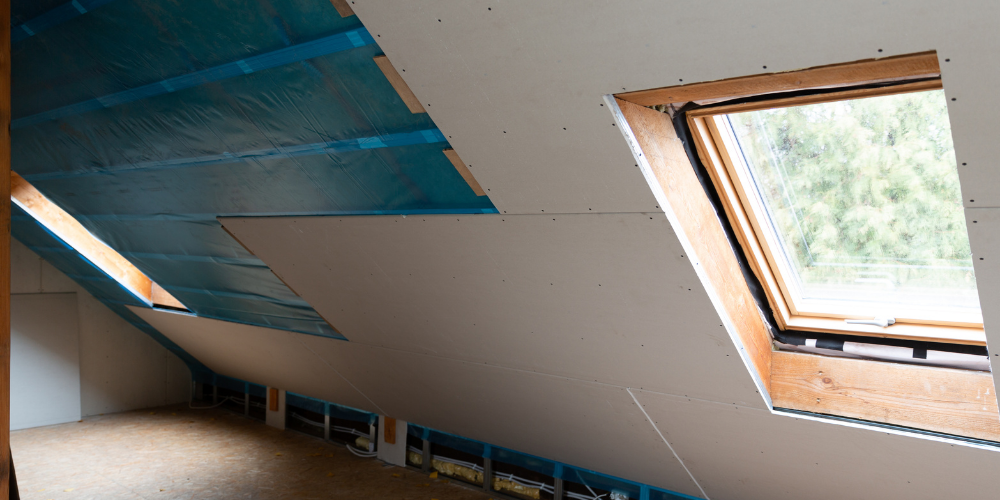
Polystyrene SIPs
There are two types of SIP: Expanded (EPS), which is the cheapest and has the highest R-value. The Extruded (XPS), which is often pink or blue in color, is stronger and can block moisture better than EPS.
- R-value: 3.8 (EPS), to 5 (XPS), per inch.
- Advantages: Lightweight and easy to install.
- Drawbacks: Need to be cut to fit around pipes or other wall penetrations. It is not structural you can attach anything to it. They can be tunneled by pests and insects. It is best to spray the panels with an insecticide before you use them. They are so air-tight that a well-built SIP structure may need fresh-air ventilation to ensure safety and conformity with building codes.
- Environmental concerns: Panels can emit toxic smoke when they are burned. While scraps and leftovers are recyclable, they are rarely recycled. Instead, they can end up in rivers or oceans as plastic bead waste.
- Best Use: New walls and ceilings, roofs, and floors.
- Pro or DIY: Often used in new construction so you will probably already have a contractor.
- Cost: EPS: $6 per 0.5-inch thick, 4-by-8ft. sheet. XPS $15 per 1-inch thick, 4-by-8ft. sheets.
Polyisocyanurate SIPs
- R-value: 5.6-7.7 per inch.
- Advantages Highest R-value per inch for insulation with thicknesses between 1/2′′ and 2′′. The insulation is often faced with foil which acts as a moisture barrier. It is easy to install.
- Drawbacks: The foil type is a moisture barrier and should not be used in areas that have an existing moisture barrier. Expensive.
- Environmental concerns: Panels produce toxic smoke when they are burned. While scraps and leftovers are recyclable, they rarely are.
- Best Use: New walls and ceilings, roofs, and floors.
- Pro or DIY: Similar to the EPS and XPS but you will likely use a contractor.
- Price: $22 per 1-inch-thick sheet, 4-by-8-ft.
Spray foam
The cost of spray foam insulation is more than batt insulation but has higher R-values. Spray foam insulation also acts as an air barrier that can be used to eliminate other weatherizing tasks like caulking.
The plastic insulation is applied as a liquid, and it expands to fill any available space. This seals all cracks and stops any air leaks. The foam insulation mixture is sprayed into the cavities. Once dry, any excess is removed and left with a smooth, flat surface.
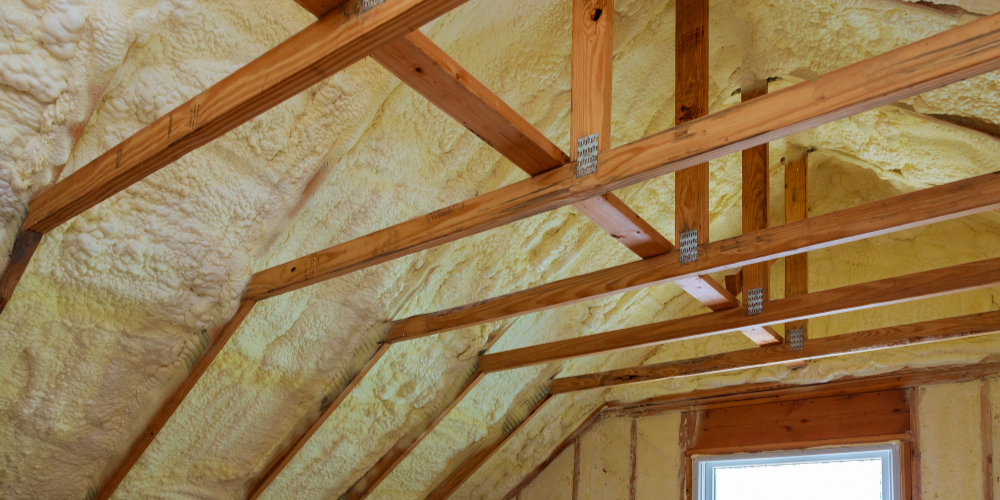
Open Cell Polyurethane Spray Foam
- R-value: 3.5-3.6 per inch.
- Advantages: Prevents air movement
- Drawbacks: Water vapor can pass through. A moisture barrier may still be required in certain situations. Requires professional installation.
- Environmental concerns: This insulation is often called half-pound foam. It contains a small amount of petroleum-based and plant-based plastics. VOCs and chemicals released during application can cause asthma and other serious effects. Wait up to three days before you re-enter.
- Best use: Walls, floors, ceilings.
- Pro or DIY: You need a professional to insulate walls, roofs, attics, floors, and ceilings, particularly if you want the highest R-value.
- Cost: $0.44 – $0.65 per board foot
Closed-Cell Polyurethane Spray Foam
- R-value: 6.0 – 6.5 per Inch
- Benefits: Prevents moisture and air from moving.
- Drawbacks: High price. Requires professional installation.
- Environmental concerns: Uses high-potential blowing agents. It is often called 2-pound foam because it uses significantly more materials than open-cell foam. Exposure problems are similar to open-cell foam.
- Pro or DIY: Professional.
- Cost: $1 to $1.50 per board foot
Are You in Need of More Attic Insulation
You can quickly check your attic floor to see if insulation is needed. You will need insulation if the insulation is not higher than the top of the joists. If you are unable to see the joists or the insulation is not high enough, then you will probably be fine and won’t get back the cost of adding additional.
